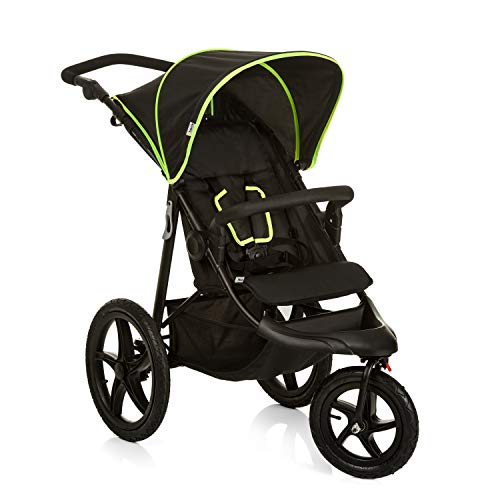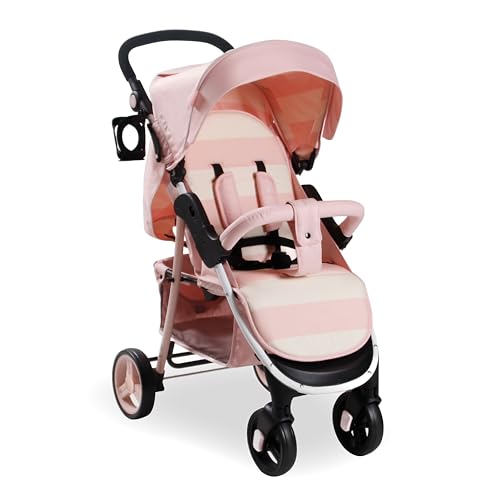관련뉴스
전문가들이 제공하는 다양한 정보
Parent Facing Pram Tips To Relax Your Daily Life Parent Facing Pram Tr…
작성자 작성자 Jared · 작성일 작성일24-12-26 20:57 · 조회수 조회수 3
페이지 정보
본문
 Monitor Your Little One's Wellbeing With a Parent Facing Pram
Monitor Your Little One's Wellbeing With a Parent Facing PramYou can easily monitor your child's well-being and comfort when they're snuggled in a pram that is positioned with the parent. This is particularly helpful during busy times.
A study by the University of Dundee found babies in face-to-face buggies had twice as many conversations, had more fun and lower heart rates - all indicators that they were less stressed.
Peace of Mind
A parent facing pram set is a great way to ensure that your baby's safety is protected. The seat will be secured with a five-point harness to keep your baby safe from accidents.
A pram and travel system of good quality will have a large basket that will accommodate all the baby's necessities, so you don't have to think about where the other things will be placed. It's also important to have the appropriate accessories to keep your child at ease during their journey. For example a footmuff compatible with a five-point harness and a lining for the pram to shield from rain or sun.
When you are choosing a pushchair for your new addition it is essential to test drive it to determine the best model for your child and yourself. Models with swivel-wheels for easy maneuverability, and adjustable handlebars will make it simpler for the entire family to operate.
A safety harness is essential for parents who are worried about their child falling out of the buggy. It will stop your child from escaping the seat. It is an excellent way to keep them close by in case of an emergency.
 Some experts advise waiting until a baby is six months old to use a lightweight stroller that faces the front but this will depend on the child's developmental milestones. Some babies are ready to enter the outside world sooner particularly in cases where their curiosity and desire to discover the world is strong.
Some experts advise waiting until a baby is six months old to use a lightweight stroller that faces the front but this will depend on the child's developmental milestones. Some babies are ready to enter the outside world sooner particularly in cases where their curiosity and desire to discover the world is strong.Parents may be worried that their baby will develop a flat spot in the back of their head after sitting in a parent facing pram, but this is nothing to be concerned about. Auckland osteopath Julia Griffiths suggests that babies must spend a significant amount of time lying flat in order to strengthen their skull muscles. this is often done by using a carrier in a position that is affixed to the parent and the supervision of tummy time.
Enhanced Bonding
Whether you have chosen a double pram and pushchair with a carrycot or opting for a pushchair, the direction your baby's face is when out and about is something to consider. It might seem like a minor detail but it has a big impact on your little one's development and interaction with you while out and out and about.
A new study has revealed that infants who sit in pushchairs away from their parents are less likely to talk, interact or laugh with them than babies who choose a pushchair facing the parent. The study involved 2,722 kids with their mothers from 60 cities as well as another study that concentrated on 20 mothers and their children. The findings reveal that babies who are in a front-facing buggy with their parents are twice as likely to smile at each other than those who are in a buggy that is away from the parents. This is due to the fact that when your baby is able to be able to interact with you and see your face and interact with you, they are more enthused.
Babies have so much to discover about the world around them, and interacting with one another while doing it encourages their development and attachment. You can also point out things to them, such as flowers playgrounds, buses, and other things that they might not normally notice.
It is crucial to remember that your baby should be able to sit independently before being turned around into an upright pushchair. Babies younger than this age could be trouble adjusting to the new position, and may be more upset when they have to move from a seated to a standing position.
The best way to be sure your child is prepared for the transition is to test them by a health professional. They will determine if your child's bones and muscles are strong enough to withstand the change, and if they have developed any sensitive areas. This test is especially crucial if your child has been using your pushchair from birth or if you previously used a pram with a rear-facing seat. A medical professional will be able to provide advice on the best time for your child to change to an forward-facing pushchair.
Better Eye Contact
One of the great benefits of having a parent facing pram is being able to make eye contact with your little one. This is especially important for newborns and infants who are still learning to communicate with the world around them. You can also play and talk with them to aid them in learning the names for the objects they see.
Studies have proven that when a child is placed in front of their parents they are more likely to talk to them and laugh than when they're away from them. This is because they're absorbing the sounds and visuals of their environment which aids them in understanding what's happening around them. In addition, eye contact makes it easier prams for newborns parents to talk to their children, which can help ease their pain and allows them to relax.
It's also a good idea to bring along a travel-friendly toy for your child to play with when they're in their pushchair. These toys are ideal for stimulating the mind and bringing smiles to children. They can also aid your baby to recognize your voice, which is important to their development as a cognitive child.
Babies are always exploring the world and their surroundings. However, as they become older and more active, they might be ready to sit forward in their pushchair. If this is the case, then it's worth thinking about purchasing a front-facing pram or stroller from our selection.
It is recommended to purchase a footmuff a few months after converting to a pushchair facing forward. This will keep your baby warm. Look for a design that can be removed and attached removed as required and is compatible with your baby's car seat or cot. You can also purchase a unique travel item for your baby to help them identify their pram when they are out and about.
An excellent way to make sure that your baby's position for pushing is correct and that they're comfortable is to check their head and neck alignment regularly. If the front of the pushchair tilts forward the neck and head are pushed against it. This is not a safe practice.
Easier Monitoring
The reassuring sight of your baby's face when they are in a parent facing pram allows you to observe your child better. You can quickly see if they are snoring, angry or cold, or if they have a hat on their head or their socks has fallen off. The presence of children on your lap makes it easier to talk to them because they are able to look at you and listen to your voice.
This is important for babies with speech and language problems because it helps them to be more active. It's also a good way to teach your child about the world, for instance, when you show them flowers or buses. You can also sing to them, particularly if you know they enjoy singing!
Numerous studies have proven that babies who are facing their parents are more likely to engage with them. This study from Dundee University, for example discovered that babies spoke twice more in a pushchair facing forward compared to those who were facing backwards. The same study also showed that babies whose faces weren't visible to their parents' hearts had heart rates that fluctuated more frequently, suggesting that they were anxious and stressed. Heart rates were more calm and more consistent among babies whose faces they could see.
This doesn't mean that every child should be switched to a forward-facing pram immediately. In fact, it's often advisable to wait until your child is at minimum six months old before making the switch. This is at which their bones and muscles are mature enough to ensure that the transition is safe for them.
Many parents keep their babies in a stroller facing the parent until the time comes. There are numerous top strollers and pushchairs that allow you switch between the two positions, so you can keep your child facing the parent as long as you like. Just remember to check the compatibility of your selected buggy or pram with the car seat you're going to use, as this can vary between models.
- 이전글You'll Never Guess This Property Boarding Up's Tricks 24.12.26
- 다음글Essential Live Betting Tips for Maximizing Your Success 24.12.26
댓글목록
등록된 댓글이 없습니다.


